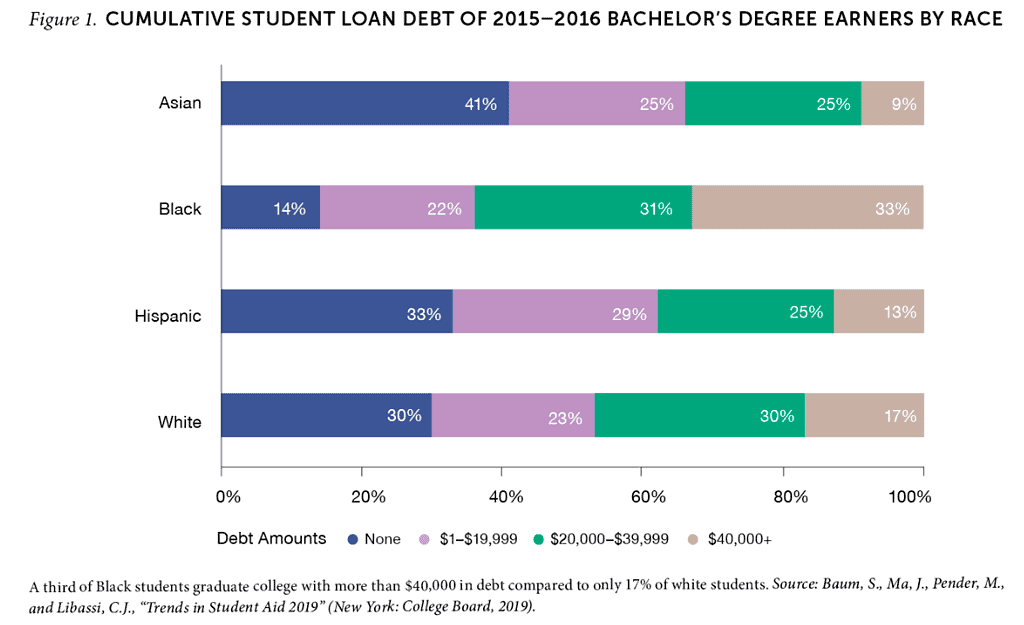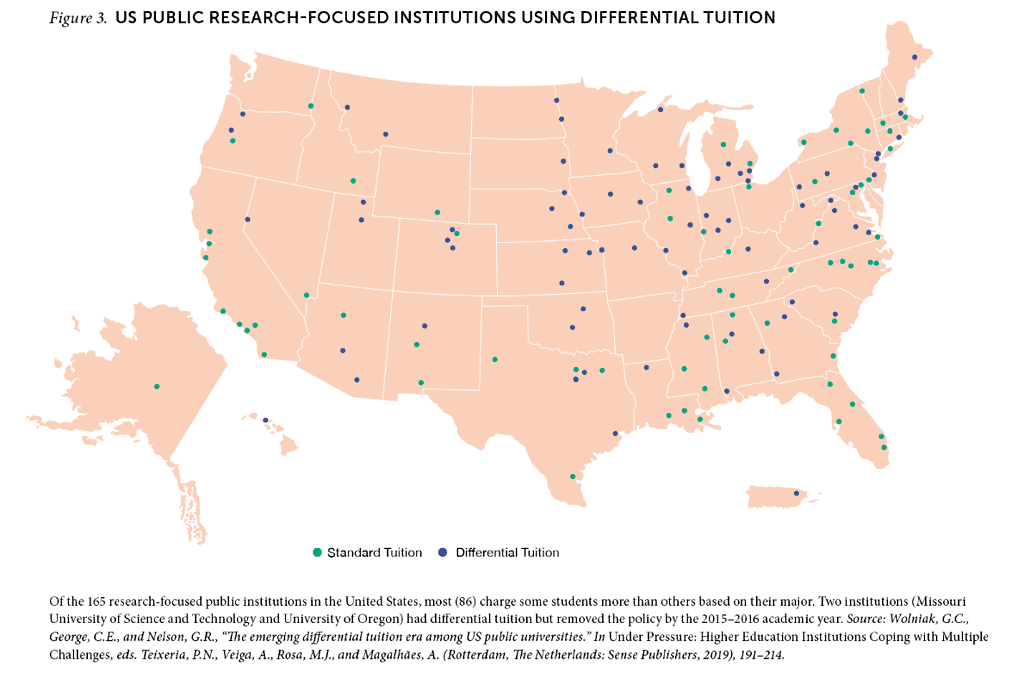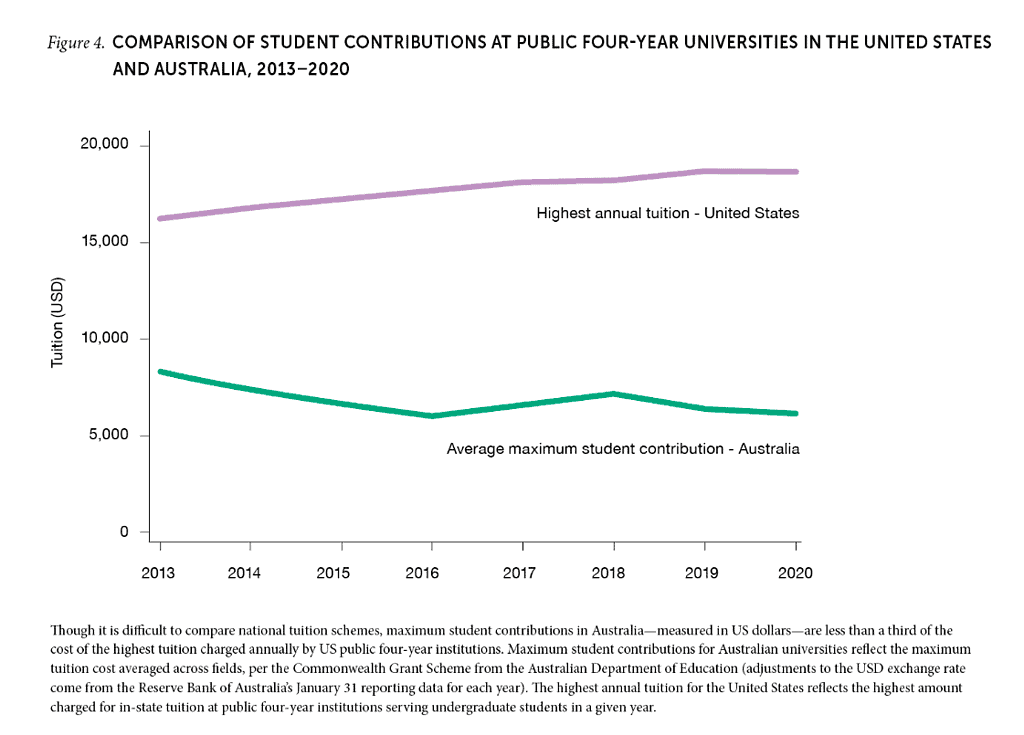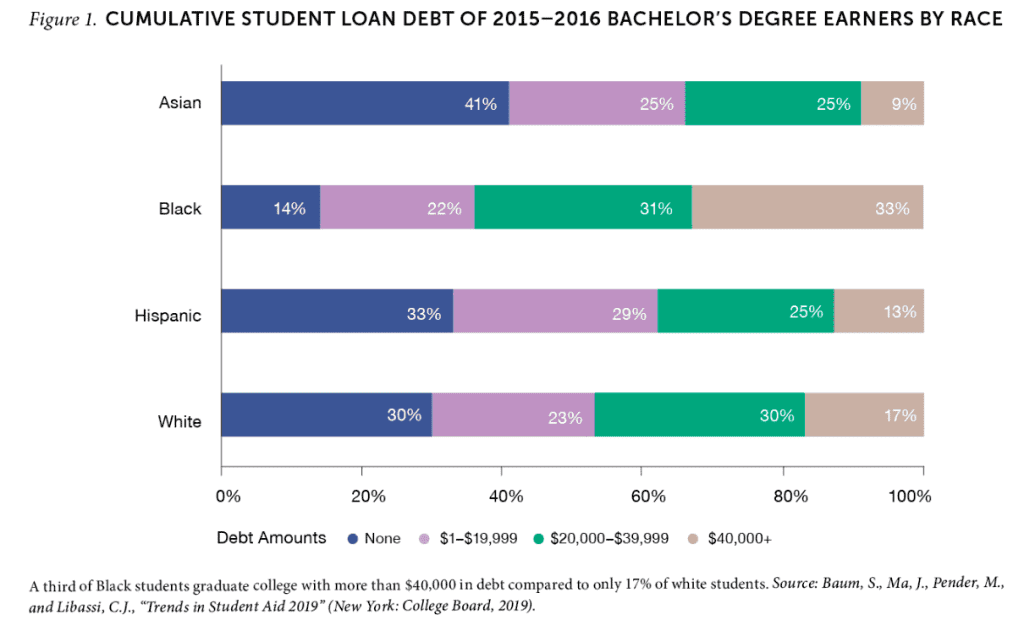In a new research article published in Issues in Science and Technology, Dominique J. Baker, an associate professor at the University of Delaware, examined the effect of student loans on STEM degrees. Baker’s discoveries emphasize a significant rise in the expense of attending public four-year colleges in the United States, which has more than doubled since the early 1990s, even after considering inflation.
Undergraduate student loan debt has reached levels that many find hard to handle. On average, bachelor’s degree recipients borrow around $41,300, with most still owing 92% of their loan four years after graduation. Worryingly, nearly one-third of borrowers who took out loans between 1998 and 2018 have failed to make their payments.
Unequal Burdens and Variable Outcomes
The burden of student loan debt does not affect everyone equally—it varies significantly across racial groups and fields of study. Recent data reveals that the repayment patterns for STEM graduates differ significantly, with debts ranging from 59% for engineering graduates to 94% for those in biological, physical, and agricultural sciences four years post-graduation.

This difference also applies to tuition costs. Some universities charge different tuition rates, making STEM degrees more expensive. For example, engineering and computer science students at the University of Maryland pay nearly 27% more per semester than their peers in other disciplines.

Navigating the Future of STEM Education
The United States currently depends on a varied set of policies that aim to make college appear affordable but actually force students to handle significant disparities in the cost of higher education. Consequently, many students are burdened with debt that can impact them for decades. Learning from the approaches of other countries in how they structure their educational funding policies to genuinely lower student costs and provide targeted tuition subsidies could offer valuable insights.
For instance, Australia’s Commonwealth Grant Scheme effectively combines tuition caps with differential tuition and government subsidies to manage education costs more equitably. Under this scheme, the government sets maximum amounts that students are expected to pay for different majors, supplemented by government contributions that vary based on the educational cost of the major and its prioritized importance.

In 2014, mathematics students at Australian public institutions were capped at a maximum contribution of A$8,613, with the government adding A$9,782. Meanwhile, engineering students paid the same maximum but received a much higher government contribution of A$21,707.
This approach contrasts sharply with tuition rates in the United States, where the highest annual tuition at public four-year institutions can be nearly three times greater than the average maximum student contribution in Australia. Additionally, even the highest student contributions in Australia for any discipline are significantly lower than the highest annual tuition fees in the U.S. This explains why an master's degree in engineering management in the United States is likely the most costly in the world.
The United Kingdom's experience with tuition caps also provides lessons, although they are mixed. The government there capped tuition for all domestic undergraduate students while cutting funding for higher education, resulting in unintended consequences such as course and program cuts, reduced faculty compensation, and a reliance on higher fees from international students. This situation emphasizes that tuition caps without additional public support can impact the quality of education while aiming to make it more affordable.
For the United States to implement a similar approach to tuition caps, comprehensive policy planning under the Higher Education Act would be required. Key considerations would involve determining who would benefit from the caps, who would establish them, how often they should be adjusted, and whether they should differ by major or class load. Additionally, the effects of such caps on financial aid, student borrowing, and the financial stability of educational institutions would need thorough examination.
Experts on college affordability and tuition policies should come together to discuss the effectiveness of tuition caps in the broader context of improving access to STEM disciplines. Since most funding for public universities comes from state budgets, federal efforts alone might not be sufficient. The decentralized nature of U.S. higher education often conceals important data from researchers and policymakers, which is crucial for developing effective policies. Therefore, leaders in higher education, especially in STEM fields, should actively engage in ongoing discussions aimed at real changes in college affordability to eliminate barriers to STEM education and careers.
Dominique J. Baker’s research urges a more coordinated effort from policymakers, educators, and community leaders to tackle the complex challenges of funding higher education in the STEM disciplines. The objective is evident: to create a fairer and more accessible path for all aspiring scientists and engineers.









